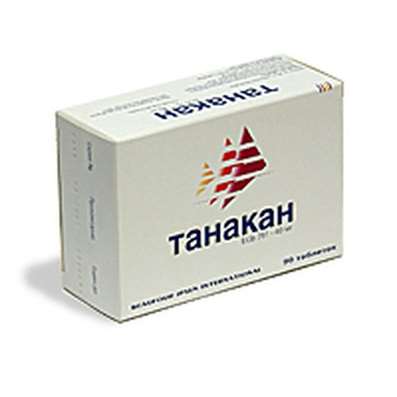Instruction for use: Rivastigmin (Rivastigminum)
I want this, give me price
Chemical name
3 - [(1S) -1- (Dimethylamino) ethyl] phenyl methyl methylcarbamate
Pharmacological group
M-, n-holinomimetiki, incl. Anticholinesterase agents
Nosological classification (ICD-10)
F00 Dementia in Alzheimer's Disease (G30 +)
Alzheimer's dementia, Dementia in Alzheimer's disease
F02.3 Dementia in Parkinson's Disease (G20 +)
Code CAS
123441-03-2
Characteristics
Rivastigmine tartrate is a white or almost white crystalline powder. It is soluble in water, soluble in ethanol and acetonitrile, slightly soluble in n-octanol, very slightly soluble in ethyl acetate. The dissolution ratio at 37 ° C of n-octanol / phosphate buffer pH 7 is 3.0.
Pharmacology
Pharmacological action - anticholinesterase.
Selective pseudo-reversible inhibitor of brain acetylcholinesterase of carbamate type (the duration of the blockade of acetylcholinesterase is about 9 hours). Prevents the destruction of acetylcholine, selectively increases the content of acetylcholine in the cerebral cortex and hippocampus, facilitates cholinergic transmission, improves cognitive processes in Alzheimer's disease. Inhibition of cholinesterase can lead to a delay in the formation of fragments of the protein beta-precursor of amyloid and the formation of amyloid plaques (pathognomonic for Alzheimer's disease).
Well absorbed when taken orally, bioavailability is 30-40%. The time to reach Cmax is 1h, the binding to plasma proteins is 40%, the volume of distribution is 1.9-2.7 l / kg. Easily penetrates the BBB. Metabolized mainly by hydrolysis with the participation of esterases (biotransformation under the influence of the main isoenzymes of cytochrome P450 is minimal). T1 / 2 - 1h. Excreted mainly by the kidneys in the form of metabolites, less than 1% - with feces. After 24 hours after taking more than 90% of the dose. Does not cumulate.
According to animal studies, it does not have teratogenic properties. The ability to penetrate into breast milk is not established.
Indications
Alzheimer's dementia (mild or moderate, with suspected or diagnosed Alzheimer's disease), mild to moderate dementia in Parkinson's disease.
Contraindications
Hypersensitivity (including carbamoylatine and other carbamate derivatives), severe liver dysfunction, breastfeeding.
Restrictions for use
Stomach and duodenal ulcer, sinus node weakness syndrome, conduction disorders (sinoatrial and AV block), arrhythmia, bronchial asthma and COPD (history), urinary tract obstruction, epilepsy, simultaneous administration of other cholinomimetic drugs, pregnancy.
pregnancy and lactation
When pregnancy is possible, if the expected effect of therapy exceeds the potential risk to the fetus.
The action category for fetus by FDA is B.
At the time of treatment should stop breastfeeding.
Side effects
From the nervous system and sensory organs: increased fatigue, asthenia, dizziness, headache, drowsiness, agitation, insomnia, impaired orientation, depression, tremor.
On the part of the intestine: nausea, vomiting, diarrhea, abdominal pain, anorexia, dyspepsia.
Other: allergic reactions, sweating, weight loss, infection of the upper respiratory tract and urinary tract.
Update of information
Post-marketing experience
There are some reports of the development of disseminated allergic dermatitis in patients regardless of the way rivastigmine is used (oral or transdermal).
Interaction
It is not recommended to use simultaneously with other holinomimetics. Increases the effect of depolarizing muscle relaxants during anesthesia.
In patients with Alzheimer's disease, simultaneous use of antacids, antiemetics and antidiabetics, antihypertensive drugs of central action, beta adrenoblockers, calcium channel blockers, digoxin, antianginal agents, NSAIDs, estrogens, analgesics, benzodiazepines and antihistamines was not accompanied by changes in the pharmacokinetics of rivastigmine or increased risk Side effects. In healthy volunteers, there was no pharmacokinetic interaction with digoxin, warfarin, diazepam, and fluoxetine.
Update of information
Interaction with metoclopramide
Simultaneous use of metoclopramide and rivastigmine is not recommended due to an increased risk of extrapyramidal adverse reactions (additive effect is possible).
Cholinomimetics and anticholinergic drugs
Rivastigmine may increase the cholinergic effects of other cholinomimetic drugs, when used simultaneously with anticholinergic drugs (eg, oxybutynin, tolterodine) - the antagonism of the action. The simultaneous use of rivastigmine with drugs that affect cholinergic structures is not recommended.
Interaction with beta-blockers
The intensification of bradycardia leading to syncope can occur when rivastigmine is used concomitantly with beta-blockers, especially cardioselective (including atenolol). Simultaneous application of rivastigmine with beta-blockers is not recommended.
Overdose
Symptoms: nausea, vomiting, diarrhea.
Treatment: cancellation of treatment for 24 hours, use of antiemetics, atropine sulfate (with a significant overdose at an initial dose of 0.03 mg / kg IV), symptomatic therapy. It is not recommended to use scopolamine as an antidote.
Routes of administration
Inside, externally, in the form of TTS.
Precautions
Cholinergic stimulation can increase the secretion of hydrochloric acid in the stomach.
Side effects observed during treatment may decrease after skipping one or more doses of the drug. If side effects persist, the daily dose of the drug should be reduced to a previous, well tolerated level.
Update of information
In the case of a common allergic dermatitis in patients, treatment with rivastigmine should be discontinued. Patients and caregivers should be informed of the possible occurrence of skin reactions.

 Cart
Cart





